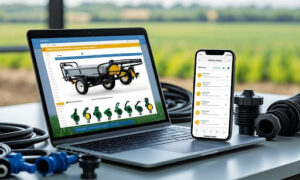The aviation industry has significantly contributed to climate change and environmental pollution in recent decades. However, with increasing pressure to reduce their carbon footprint, aviation companies are making strides towards sustainable practices to make air travel more environmentally friendly. Eco-friendly aviation is not only a moral obligation but is also essential for a sustainable future. Jettly Reviews will explore the sustainable practices and technologies transforming the aviation industry.
Sustainable Aviation Fuel
One of the most significant innovations in eco-friendly aviation is sustainable aviation fuel (SAF). It comprises a range of alternative fuel sources that don’t depend on fossil fuels. Sustainable fuels include biofuels made from waste, algae, and unneeded crops. Unlike traditional jet fuel, SAF produces significantly less greenhouse gas emissions, improving air quality.
Additionally, SAF is drop-in fuel, meaning it can be added directly to existing aircraft engines. The aviation industry is committed to using 2 billion gallons of SAF by 2030, making up approximately 10% of aviation fuel.
Electric Aircraft
Electric aircraft technology is another sustainability game-changer. Electric aircraft engines have lower emissions, require less maintenance, and are significantly cheaper than traditional fossil-based engines. Many aviation companies are experimenting with electric aircraft, which could revolutionize air travel.
The aircraft was fitted with an electric motor powered by lithium-ion batteries, making zero-emission flights possible. The technology is still developing, and electric planes have limited ranges. However, aviation analysts believe electric passenger planes could be viable for short-haul journeys within the next decade.
Sustainable Jetliner Design
Manufacturers of commercial aircraft are also looking towards sustainable designs. These designs include fuel efficiency, lighter materials, and aerodynamic shapes that produce less drag and consume less fuel. In addition, sustainable aircraft designs incorporate insulation materials that reduce engine noise pollution.
Several manufacturers have developed new planes or made modifications to their existing aircraft. For instance, Airbus A320neo, Boeing Dreamliner, and Embraer E2 jets have eco-friendly features such as fuel-efficient engines, lighter materials, and aerodynamically efficient designs.
Energy Efficient Airports
Airports are responsible for much of the aviation industry’s carbon footprint, pushing developers to create more sustainable facilities. Sustainable airport design includes reducing energy demand, using renewable energy sources, and developing green spaces in and around airport facilities. Los Angeles International Airport (LAX) collaborated with the Los Angeles Department of Water and Power will install 600,000 solar panels as part of their ambitious plan to reduce energy demand. Other airports have invested in public transportation and cycling initiatives, incentivizing travelers to use more sustainable forms of transportation.
Carbon Offsetting Schemes
Carbon offsetting schemes are programs designed to compensate for carbon emissions through carbon capture projects, such as tree planting, renewable energy projects, and investing in clean transport. Aviation companies can offset their carbon emissions by investing in climate-change mitigation projects. Several airlines like EasyJet, Delta Air Lines, and United Airlines have signed up for carbon offsetting schemes. Business travelers can offset their carbon footprint through airline websites through these mitigation schemes.
In addition to these sustainable practices and technologies, the aviation industry is also exploring other environmentally-friendly initiatives such as waste management, water conservation, and reducing plastic usage. These efforts highlight the industry’s commitment to achieving more sustainable air travel.
As the demand for air travel continues to grow, the aviation industry must prioritize sustainability and reduce its environmental impact. By implementing eco-friendly practices and investing in sustainable technologies, the aviation industry can significantly mitigate climate change and create a more sustainable future for air travel. Collaboration and innovation can pave the way towards a greener, more eco-friendly aviation industry.
Conclusion
In conclusion, Jettly Reviews believes the rise of eco-friendly aviation is a promising step towards a more sustainable future. With advancements in sustainable practices and technologies, the aviation industry can reduce its environmental impact while meeting the growing demand for air travel. It is essential for all stakeholders in the industry, including airlines, manufacturers, and airports, to work together towards creating a more environmentally friendly aviation sector. By embracing sustainability, we can ensure that the wonders of air travel can be enjoyed for generations.




































